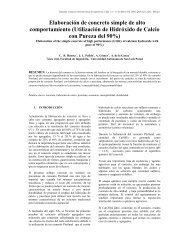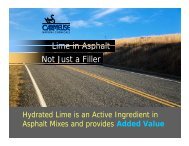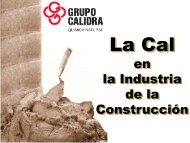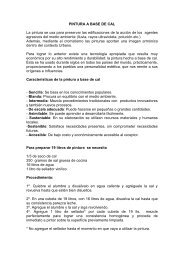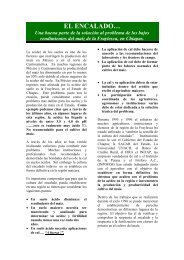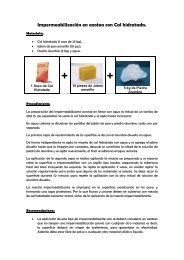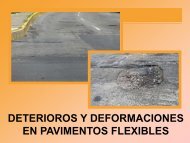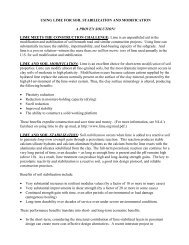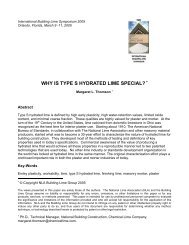Land Contamination: Technical Guidance on Special Sites: Acid Tar ...
Land Contamination: Technical Guidance on Special Sites: Acid Tar ...
Land Contamination: Technical Guidance on Special Sites: Acid Tar ...
You also want an ePaper? Increase the reach of your titles
YUMPU automatically turns print PDFs into web optimized ePapers that Google loves.
6.2.5 Solidificati<strong>on</strong> and stabilisati<strong>on</strong> based technologies• Solidificati<strong>on</strong> and stabilisati<strong>on</strong> based technologies include cement and pozzolan-basedsystems, vitrificati<strong>on</strong>-based systems and lime-based systems. Of these, the latter aremost applicable and they can be broadly divided into c<strong>on</strong>venti<strong>on</strong>al neutralisati<strong>on</strong>processes and proprietary methods such as DCR. Other solidificati<strong>on</strong> processes mayalso be applicable.Neutralisati<strong>on</strong> Using C<strong>on</strong>venti<strong>on</strong>al Methods• Neutralisati<strong>on</strong> may be achieved by the applicati<strong>on</strong> of quicklime (calcium oxide)directly with the tar in situ. This may be possible where the tar forms a shallowlago<strong>on</strong>, although, as previously noted, there are likely to be significant problems inobtaining a suitably intimate mixture. Alternatively, the process may be carried out exsitu, either in layers or in specially designed plant. Due to the problems in achievingfully effective treatment, it should be viewed as partial in nature and undertakenmainly as an intermediate stage prior to landfilling;• neutralisati<strong>on</strong> processes have been carried out to varying degrees in the past. <strong>Tar</strong>s arefirst mixed with soil to give a friable, crumbly texture suitable for the neutralisati<strong>on</strong>process. C<strong>on</strong>taminated soils from the site can be used for this purpose, the proporti<strong>on</strong>smay be up to 50:50 soil to tar. Neutralisati<strong>on</strong> involves mixing the tar-soil mixturewith lime (up to 30% lime). The resulting neutralised tar can then be landfilled;• this opti<strong>on</strong> is becoming increasingly difficult as there are fewer suitable landfill sitesavailable that will accept the waste. In 1998 the costs of disposal by this method weregenerally in the order of £100 to £150/t<strong>on</strong>ne for treatment and disposal;• other end uses have been suggested in the literature, such as a binder for coalbriquetting, as a solid fuel for industrial furnaces, or as a paving material for roads oflow traffic density (see Baruah(1995)). Although these may be technically feasible,they may not be commercially attractive unless the volume of tar to be disposed of isvery substantial or such a route already exists. Nevertheless, rising landfill costs havecaused re-examinati<strong>on</strong> of the potential for developing commercial applicati<strong>on</strong>semploying wastes in road c<strong>on</strong>structi<strong>on</strong>;• a method known as "Pseudo-landfill" has also been used in the past, the disposal ofacid tar in a ‘clay vault’ filled with rubber tyres that help prevent migrati<strong>on</strong>. The tarswere covered with water and left for a m<strong>on</strong>th to form three layers: 1) a top oily layerwhich was removed and recovered as boiler fuel; 2) a layer of dilute sulphuric acidwhich was also removed; and 3) the tar layer, which remained in the clay pit. The pitwas bunded by layers of quicklime to neutralise any tar that migrated, and coveredwith 2 m of domestic refuse. The process still leaves a layer of acid tar in a pit, andthe material can still pose problems in terms of odour and subsurface migrati<strong>on</strong> issues.In the c<strong>on</strong>text of the EU <str<strong>on</strong>g>Land</str<strong>on</strong>g>fill Directive, such a method is less likely to beembraced in the future.R&D <str<strong>on</strong>g>Technical</str<strong>on</strong>g> Report P5-042/TR/04 35



